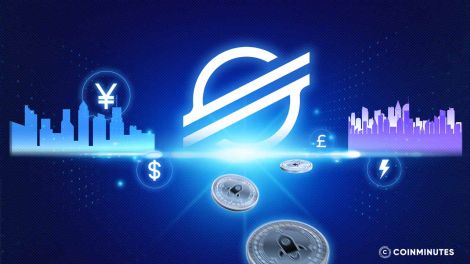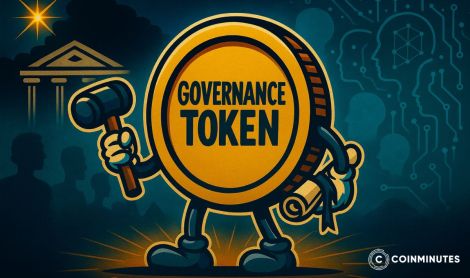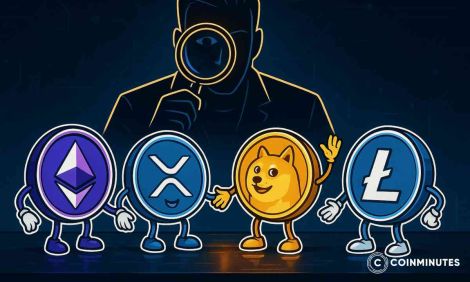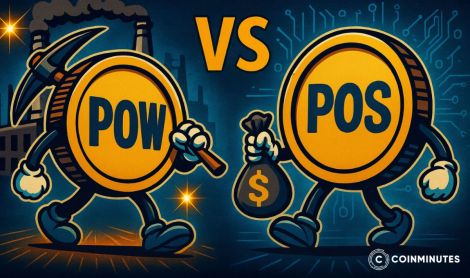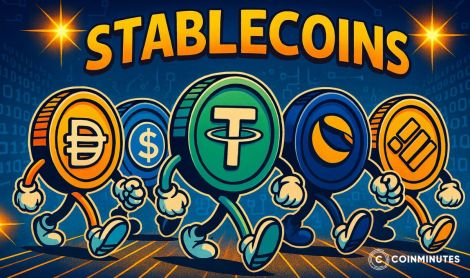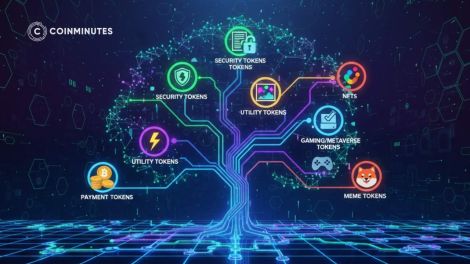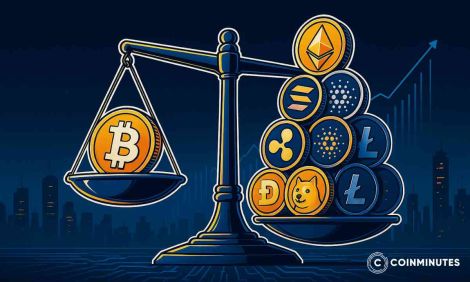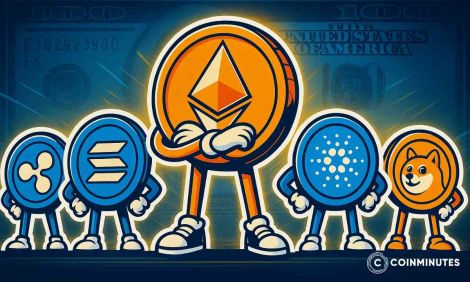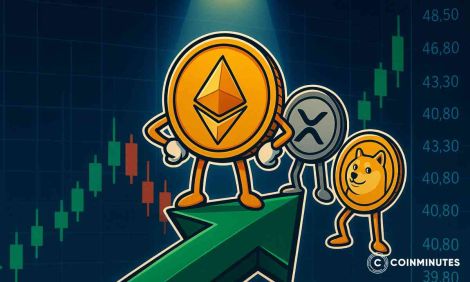Breaking Down Security Tokens: What You Need to Know About Tokenized Assets in 2025

So I've been in crypto since 2017 and let me tell you - security tokens are still massively misunderstood. Here at CoinMinutes, our team ran a survey last month and found that 65% of investors still can't tell the difference between security tokens and utility tokens. No wonder people keep getting burned or missing opportunities.
The market's grown from about $1.5B back in 2021 to somewhere around $15-18B now (depends who you ask). I'm going to break down what these things actually are, how they're different from regular tokens, and the regulatory mess you need to navigate if you want to play in this space.
Fair warning: I'm diving deep into the regulatory stuff because that's my background. If that bores you, skip to the "Types of Security Tokens" section where things get more practical.
What Does a Security Token Actually Entail?
A security token is essentially just a traditional investment asset (stocks, bonds, real estate) that's been digitized using blockchain. While normal securities sit in centralized databases maintained by transfer agents and clearinghouses, security tokens live on shared ledgers that make transferring and managing ownership way more efficient.

Digitizing real-world investments
Think of it like a digital stock certificate. The certificate itself isn't worth anything - it's the legal rights behind it that matter. Security tokens work the same way, just with more bells and whistles and fewer middlemen clogging things up.
There are three main things that define these tokens:
-
They represent real-world assets - company shares, debt, real estate, or investment funds
-
They have to follow securities laws (this is non-negotiable)
-
They use blockchain, which enables some cool features like fractional ownership and automatic dividend payments
The magic happens when these elements come together. For instance, a $50M property that traditionally required $250K minimum investments can now be broken into $1K pieces, dramatically lowering barriers while keeping everything above board legally.
I've seen both sides of this market, and there are solid reasons these are gaining traction:
For investors, they unlock assets that were previously untouchable. At a Miami crypto meetup last fall, I met Miguel, a software developer making decent money but priced out of his local real estate market. He showed me his portfolio on his phone - he owned 0.0014% of a commercial building in Singapore through tokenized securities. Traditional real estate syndicates would've laughed at his $2,200 investment.
For issuers, the benefits are even bigger. Traditional securities issuance eats 4-7% of the total raise in fees, while security token offerings can cut this down to 2-3%. When Capital Holdings tokenized their $75M real estate portfolio last year, they saved roughly $2.4M while reaching investors from countries their traditional raise couldn't touch.
Beyond just saving money, the 24/7 trading capability eliminates the time constraints of traditional exchanges. Features like automatic dividends, voting rights, and programmed transfer limits create shortcuts that traditional systems just can't match.
Though honestly, I think the liquidity benefits are way overhyped right now. The markets are still thin, and you shouldn't expect to easily sell tokenized real estate at 3 AM on a Sunday, no matter what the marketing materials tell you.
Security Tokens vs. Utility Tokens: Why Everyone Gets Confused
People mix these up for a bunch of reasons. Some projects deliberately blur the lines to attract investors while avoiding securities regulations. The underlying tech looks identical too, making them seem similar when they're fundamentally different.
Investor behavior makes it worse, since people often buy utility tokens hoping they'll go up in value rather than for their actual utility. Governance tokens with voting rights that can impact protocol value have made this distinction even murkier.
Here's a quick comparison:
|
What Matters |
Security Tokens |
Utility Tokens |
|---|---|---|
|
Purpose |
Ownership in an asset |
Access to services/features |
|
Regulations |
Subject to securities laws |
Less regulated (unless deemed a security) |
|
Why buy it? |
As an investment |
For functional utility |
|
Income potential |
May pay dividends or profit sharing |
Value tied to ecosystem demand |
|
Transfer rules |
May have restrictions |
Usually freely transferable |
|
ID verification |
Almost always required |
Varies by platform |
|
Examples |
Tokenized real estate, shares, bonds |
ETH, BNB, app access tokens |
The Legal Landscape (Yeah, It's Complicated)
The compliance headache isn't just about following rules - it's about building systems that handle cross-border conflicts.
U.S. Regulations and the Howey Test
The SEC views security tokens through existing securities laws - mainly the Securities Act of 1933 and Securities Exchange Act of 1934. Under these frameworks, security tokens must either register with the SEC (expensive and time-consuming) or qualify for an exemption.
Most security token offerings use exemptions like Reg D, which limits offerings to accredited investors - folks with net worth over $1M or income above $200K/year. Reg A+ allows raises up to $75M from both accredited and non-accredited investors, though with more paperwork.
Reg S creates a safe harbor for offerings outside the U.S., while Reg CF enables crowdfunding up to $5M from regular folks.
The compliance doesn't end after issuance either. Ongoing reporting requirements, transfer restrictions, and secondary trading limitations create a constant headache for token issuers. I made this mistake when advising a client in 2022 - we focused so much on the initial compliance that we underestimated the ongoing reporting burden. They ended up spending an extra $120K in their first year just handling the compliance fallout. Learn from our mistake.

How regulators define a security
The Howey Test from a 1946 Supreme Court case remains the yardstick U.S. regulators use to determine if something is a security. An offering counts as a security when these four elements exist:
-
An investment of money
-
In a common enterprise
-
With an expectation of profits
-
Derived primarily from others' efforts
Applied to tokens, this has huge implications. Take the DAO token offering back in 2017 that the SEC investigated. Investors bought DAO tokens with ETH (investment of money) in a single project (common enterprise) expecting returns (profit expectation) based on the work of the project managers (others' efforts). The SEC ruled it was an unregistered security offering.
In contrast, when users buy ETH primarily to pay for gas fees rather than as an investment, it typically wouldn't meet the Howey Test criteria - which is why ETH itself isn't generally considered a security by most regulators.
Getting this wrong is expensive. In 2020 alone, the SEC hammered various token issuers with penalties exceeding $100M.
International Approaches and KYC Requirements
The UK and EU take slightly different approaches from the US.
The UK's Financial Conduct Authority (FCA) is more straightforward than the SEC. They recognize three token categories: exchange tokens (like Bitcoin), utility tokens, and security tokens. Security tokens fall under the Financial Services and Markets Act.
The European Union has implemented its Markets in Crypto-Assets (MiCA) regulation. Security tokens remain covered by existing securities laws like the Prospectus Regulation and MiFID II.
The EU's "passporting" system is a huge advantage - security token offerings approved in one member state can be marketed across all EU countries. Way better than the fragmented U.S. approach.
Know Your Customer (KYC) and Anti-Money Laundering (AML) procedures are non-negotiable for security tokens globally. These include identity verification using government IDs, address confirmation, source of funds verification for larger investments, and ongoing transaction monitoring.
Let's be honest - this process s*cks for investors. Even when systems work correctly, it feels invasive and takes forever. I've personally abandoned investments because the KYC process was so painful.
But compliance automation tools are helping. Platforms like Securitize and Polymath have built tech that bakes compliance directly into tokens, enforcing transfer restrictions automatically. What's particularly cool about the ERC-1400 standard is how it handles forced transfers - a feature that solves a huge compliance headache. Traditional securities sometimes need to be reclaimed due to court orders or inheritance situations. Building this capability into the token itself solves what would otherwise be a deal-breaker.
Security Token Offerings (STOs): The Real Deal
Having guided companies through this process, I've seen how STOs can cut costs while opening up capital access. But they're not magical money machines - there are real tradeoffs.
A Security Token Offering is a regulated fundraising method where an issuer sells tokenized securities on blockchain. Unlike ICOs that often played regulatory hopscotch, STOs embrace securities laws head-on.
The STO model sits between Initial Public Offerings (IPOs) and ICOs:
Compared to IPOs, STOs cost less, happen faster (weeks vs. a year+), and offer better access to international investors. The downside is they provide less liquidity and market recognition.
Compared to ICOs, STOs provide better investor protection, regulatory clarity, and legal recourse. They attract more institutional participation but require significantly more compliance work.
From what I've seen working with clients, launching an STO involves:
-
Legal structure development: Pick your jurisdiction and legal framework. Create offering documents that comply with your selected exemptions.
-
Token architecture: Build security tokens with necessary compliance features using established standards like ERC-1400 or ST-20.
-
Issuance platform selection: Choose a platform that handles technical issuance and compliance.
-
KYC/AML implementation: Set up verification systems that satisfy regulatory requirements.
-
Marketing and investor outreach: Develop compliant marketing (harder than it sounds).
-
Offering execution: Run the token sale according to regulations.
-
Post-issuance management: Implement systems for dividends, voting, investor communications, etc.
The whole thing typically takes 3-6 months and costs $50,000-$500,000 depending on complexity. The biggest costs are legal structuring ($20-100K), technical development ($15-75K), platform fees ($10-50K), and marketing ($5-100K).
I screwed up the tax implications of my first security token dividend payment back in 2021. I assumed it would be treated like a stock dividend, but the platform didn't withhold taxes, and I got slapped with an unexpected tax bill the following April. Lesson learned: talk to a tax pro familiar with digital assets before investing, not after.
Types of Security Tokens (And What They're Good For)
Each token type has different characteristics and use cases:

How different security tokens work
Equity Tokens
These represent ownership shares in a company, similar to traditional stock but with blockchain-powered features. They typically include voting rights, dividend eligibility, and potential appreciation.
Blockchain-based equity beats traditional shares in several ways. Smart contracts can automatically distribute dividends, run shareholder votes, and maintain a real-time cap table without expensive administration.
Switzerland's Blockchain Act, implemented in 2021, created a clear framework for equity tokenization. Swiss companies like Mt Pelerin have issued compliant equity tokens that function like traditional shares under Swiss law.
Debt Tokens
These represent loans, bonds, or other credit instruments. They typically provide interest payments and return principal at maturity.
The efficiency gains are huge here. Traditional bond issuance and administration often costs 1-3% annually. Tokenized debt can slash these costs to 0.2-0.5% through automated interest payments and simplified compliance reporting.
Societe Generale's €100M covered bond issued on Ethereum demonstrated this potential. The bond offered the same risk profile and returns as traditional instruments but with faster settlement and reduced administration.
Real Estate Tokens
This is where I've seen the most traction. These tokens represent fractional ownership in properties or portfolios.
The benefits go beyond just fractional ownership. Automated rent distribution, transparent occupancy reporting, and simplified transfers create a better investor experience.
RealT has pioneered this approach, tokenizing residential properties and distributing rental income directly to token holders monthly. Their portfolio includes over 200 properties with thousands of investors.
Fund Tokens
Fund tokenization applies blockchain efficiency to investment funds - hedge funds, venture capital, and private equity. These tokens represent shares in a professionally managed portfolio.
Automation cuts fund administration costs dramatically. NAV calculations, investor reporting, capital calls, and distributions that typically require manual work can be largely automated.
Firms like Blockchain Capital and SPiCE VC have tokenized their venture funds, offering investors both professional management and improved liquidity compared to traditional venture structures.
Investing in Security Tokens
Your platform choice shapes your user experience, compliance status, and liquidity options.
Platforms and Process
The security token ecosystem continues to mature, with several leading platforms:
|
Platform |
What It's Good For |
Where It's Based |
Main Focus |
|---|---|---|---|
|
Securitize |
End-to-end issuance with SEC-registered transfer agent status |
USA |
Compliance and lifecycle management |
|
Polymath |
ST-20 token standard with built-in compliance |
Global |
Token creation and management |
|
tZERO |
ATS-licensed exchange for secondary trading |
USA |
Liquidity and market making |
|
Tokeny |
Compliant tokenization platform |
Luxembourg |
European market focus |
|
INX |
SEC-registered digital asset trading platform |
USA |
Regulated trading environment |
I've personally tried three of these platforms, and the user experience varies wildly. Securitize has the slickest interface but the most demanding verification process. tZERO feels like a traditional brokerage, making it comfortable for traditional investors but confusing for crypto-natives. Polymath offers the most flexibility but requires more technical know-how.
A new batch of "security token lite" platforms is popping up to simplify the process for retail investors. They're cutting corners to lower barriers while staying compliant. At CoinMinutes, we've been tracking these platforms closely in our market reports, but I remain wary about their long-term viability given the complex regulatory landscape.
The investment process typically involves platform selection, account creation, identity verification, accreditation checks if required, reviewing offering materials, funding your account, and executing your purchase. Expect to spend 2-3 hours on account setup and verification, plus additional time for due diligence. Once established, subsequent investments often take just minutes.
Risks and Considerations
Security tokens, while regulated, still carry risks.
Regulatory uncertainty is a big one. Despite progress, regulations keep shifting. Changes could impact token transferability, valuation, or validity.
Liquidity problems are still a pain point. Despite theoretical 24/7 trading capability, actual liquidity remains limited by the small number of registered trading systems and tiny investor pools.
Platform counterparty risk shouldn't be ignored. Your tokens may depend on the continued operation of the issuance platform. If the platform fails, token transferability and management could be compromised.
Mitigate these risks by diversifying across token types, platforms, and asset classes. Treat security token investments as medium to long-term holdings rather than actively traded positions.
Where This Is All Headed
The security token market is definitely at an inflection point. While the current market cap is tiny compared to the $100+ trillion traditional securities market, growth could be substantial if current trends continue.
Industry research points to possible 35-45% annual growth through 2028, potentially hitting $75-100B within three years. This would be driven by institutional adoption, clearer regulations, and infrastructure improvements.

The $16 trillion city of the future
Boston Consulting Group suggests that by 2030, up to 10% of global GDP could be tokenized - a $16 trillion opportunity. I think these projections are way overblown, but even at a quarter of these estimates, we're looking at a massive opportunity.
Three factors will likely accelerate adoption:
-
Institutional entry: Major financial institutions including JPMorgan and Goldman Sachs have launched digital asset initiatives.
-
Regulatory clarity: The SEC's Staff Accounting Bulletin 121 and similar guidance is creating clearer frameworks.
-
Infrastructure maturation: Enterprise-grade custody, trading, and management solutions are addressing barriers to adoption.
Why CoinMinutes Was Founded (And Why You Might Actually Want to Check It Out)
CoinMinutes was born out of our founder’s own expensive mistakes and weird chart obsession. We're not Bloomberg or anything fancy - used to just be me and two other crypto degens who spend wayyy too much time analyzing this stuff.
Our newsletter is kinda like this article but weekly, and includes:
-
Market updates that don't suck (I write these usually half-caffeinated at 6am)
-
Where money's actually flowing (not just what CT influencers are shilling)
-
"FOMO Check" sections when I notice everyone getting too excited about garbage
-
Security warnings
-
Deep dives on projects that aren't being hyped yet
If you've read this far, you're probably the kind of person who'd enjoy our slightly unhinged but hopefully useful takes.
Check us out at https://coinminutes.com/ if you want, or don't - I'm not your dad. But our free Friday emails are pretty good, just saying. Hope to see you there!
Frequently asked questions
The consequences depend on the specific legal and technical structure. In properly designed systems, the token smart contracts should continue functioning independently, though transfer and compliance services might be disrupted. Best practices include ensuring tokens reference off-chain legal agreements that remain valid regardless of platform status.
Absolutely. Security tokens can distribute dividends, interest payments, or returns directly to token holders' wallets. These can be programmed to execute automatically when conditions are met, like quarterly profits or rental income receipt.
It varies widely. Some platforms allow investments as low as $100, while others maintain minimums of $10,000 or more. Regulatory exemptions sometimes impose different minimums for accredited versus non-accredited investors.
Yes, when issued in compliance with securities laws. The key is following proper registration requirements or qualifying for exemptions in each jurisdiction. Don't take this as a green light without legal counsel - the details matter and vary by location.
 English
English
 Vietnamese
Vietnamese



